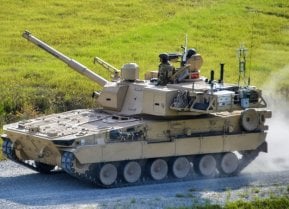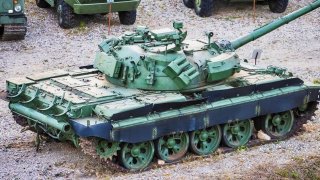The T-54/T-55 Tank Phenomenon: Redefining Armor in the Cold War Era
During World War Two, the Soviet Union's effective use of tank forces played a pivotal role in countering Nazi advances, culminating in significant victories such as the Battle of Kursk. Post-war, the USSR continued to prioritize its armored fleet, introducing the T-54 in 1945.
Summary: During World War Two, the Soviet Union's effective use of tank forces played a pivotal role in countering Nazi advances, culminating in significant victories such as the Battle of Kursk. Post-war, the USSR continued to prioritize its armored fleet, introducing the T-54 in 1945. This model, and its successor the T-55, marked significant advancements in firepower, armor, and design over their WWII predecessors. Despite initial quality issues, modifications led to improved versions featuring enhanced weaponry, armor, and operational capabilities, including NBC protection. The T-54/T-55 series exemplified Soviet engineering efficiency, remaining in service even as late as the 2022 invasion of Ukraine, highlighting its enduring legacy and versatility.
Unveiling the Soviet Armor Giant: The Evolution of the T-54 to T-55 Tanks
The Soviet Union in World War Two relied heavily on tank forces to stall the Nazi advance. Its tanks then swept Hitler’s forces back across Eastern Europe, most notably at the Battle of Kursk.
After the war, the Soviets, recognizing their geographic reality resting against the open plains of Eastern Europe, followed precedent and invested in their tank fleet. The result, debuting in 1945, was the T-54. The Soviets built nearly 100,000 units of this tank.
T-54 Tank: Creating a Cold War Staple
T-54 production began modestly, with about 1,500 tanks initially built.
The Soviet Army began accepting the tank in 1945, noting the design improvements over World War II models like the T-34.
The T-54 featured a 100mm gun that fired BR-412 series full-caliber APHE ammunition. It had more penetrating power than the T-34’s gun. The T-54 also had thicker hull armor than predecessors, featuring 80mm of armor on the sides, 30mm on the roof, and 20mm on the bottom of the tank.
As was often the case with Soviet weapons systems, quality problems appeared as production accelerated. Changes were made in response. For example, a new dome-shaped turret with flat sides was installed, and fender machine guns were removed in favor of a single bow-mounted machine gun. The transmission was also updated, while the track was widened to 580mm.
The refreshed T-54 was designated the T-54-2, and would be the first of many modernizations. A later model would become known as the T-55, a tank featuring an NBC (nuclear, biological, and chemical) protection system that would initiate 0.3 seconds after detecting gamma radiation.
The T-55 was also updated with a new V-55 12-cylinder four-stroke one-chamber 38.88-liter diesel engine capable of producing up to 580 horsepower. Fuel tanks were added to the front of the T-55’s hull, improving fuel capacity to 180 U.S. gallons. Meanwhile the ammunition load for the main gun was also improved, from 34 to 45, with an additional 18 shells stored in “wet containers” located within the hull fuel tanks. The T-55 carried a variety of different ammunition types, including high explosive-fragmentation and anti-tank rounds.
T-54 and T-55 variants had a cabin layout that mirrored many post-World War II tanks. The fighting compartment was in the front, while the engine compartment was in the back, and a dome-shaped turret rested atop the center of the hull. Visually, the T-54 and T-55 variants were difficult to distinguish and came to be known collectively as the T-54/T-55.
The T-54/T-55 was celebrated for its simplicity and its robustness. The tanks were easy to operate, especially relative to Western contemporaries, and did not require advanced training or education. The tanks were lightweight, which allowed for greater mobility.
While the T-54/T-55 would become outdated, in the 1950s the tank was considered quite capable. Relative to the standards of the decade, the T-54/T-55 had impressive firepower and hearty armor protection, and this was all packed into a simple and compact design that was smaller and lighter than Western models.
Remarkably, in 2022 the Russians, desperate to compensate for egregious tank losses during the invasion of Ukraine, began recommissioning T-54/T-55 tanks and sending them to the frontlines. One tank was even recommissioned from a museum.
About the Author: Harrison Kass
Harrison Kass is a defense and national security writer with over 1,000 total pieces on issues involving global affairs. An attorney, pilot, guitarist, and minor pro hockey player, Harrison joined the US Air Force as a Pilot Trainee but was medically discharged. Harrison holds a BA from Lake Forest College, a JD from the University of Oregon, and an MA from New York University. Harrison listens to Dokken.
Image Credit: Shutterstock.


